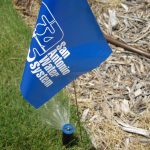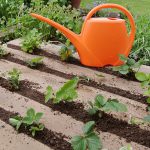Who says it’s too hot to garden? Late summer is the perfect time to get rid of any non-native plant species invading your yard and prep your landscape for fall planting season.
Late July and early August always give me the garden blues. By this time, I have eliminated all spring season vegetable plants, except some okra and peppers, and I’m waiting for the fall season to begin. I’ve also stopped watering all native species.
What’s left to do in the landscape, you ask? Well, late summer is the perfect time to get rid of any and all insidious non-native plant species invading your yard.
In my opinion, there are several species that are damaging to our native ecosystem that should be removed. These include:
Ligustrum [Ligustrum japonicum, L. lucidum, L. quihouri, L. sinese],
Giant cane [Arundo dondex]
Golden bamboo [Phyllostachys aurea]
Johnsongrass [Sorghum halepense]
Nandina [Nandina domestica]
Pyracantha [Pyracantha spp]
Japanese honeysuckle [Lonicera japonica]
Catclaw vine aka Yellow trumpet vine [Macfadyenna unguis-cati]
At this time of year, these distasteful plants are pretty evident and can be cut. Unfortunately, an herbicide application is necessary to permanently kill these noxious plants and their roots.
To minimize drift and killing of non-target species, I suggest cutting the offending plant and applying judicious amounts of a labeled herbicide, either Glyphosate or Triclopyr, to the pruned stump. Always obey the product instructions to the letter.
Finally, as we approach fall — the season for planting — we can replace the invaders with native trees and shrubs that supply our native fauna with food and shelter.




